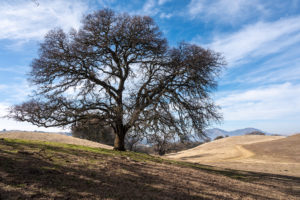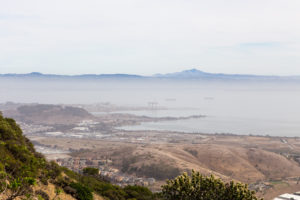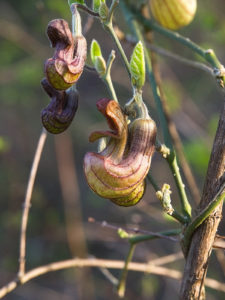Stephen Edwards has been director of the Regional Parks Botanic Garden in Tilden Park since 1983. His graduate work at UC Berkeley involved extensive study in the fields of geology, botany, and paleontology, and he has continued to follow his passion for these subjects ever since, though his wide-ranging interest in California natural and human history has also led him to studies in the fields of ethnography and archaeology. But for the past 30 years, his primary focus has been native plant horticulture and maintaining and enhancing the Botanic Garden’s stature as the preeminent collection of California native plants in Northern California. Edwards is also a prolific author and lecturer and has written many scientific and popular papers on California botany, horticulture, paleontology, and archaeology.
BN: How long have you lived in the Bay Area?
SE: I’ve lived in the East Bay all my life.
BN: How did your interest in nature develop?
SE: My mother was a great wildlife and landscape painter, and for a time she was the official artist of the California Wildlife Federation. At least once a year, she and my dad took my brothers and me camping in the Sierra. Closer to home, my brothers and I did lots of hiking in the East Bay hills and at Point Reyes. Then, at age 12, I started growing cacti and native plants in my parents’ back yard, and because of my horticultural bent, I became a denizen of botanic gardens.
BN: When did you first become involved with the East Bay Regional Parks?
SE: Early in my life, I recall going on Sunday morning picnics with my parents under the redwoods in Redwood Regional Park, and then riding the little steam train at Tilden Park. Then, in 1969, I stumbled upon the botanic garden in Tilden and I was swept away. In 1970, I started working there, where I met Walter Knight, the garden supervisor, who took me under his wing and showed me how much fun it could be to study our local flora.
BN: What are some of the most pressing issues you’re working on today?
SE: Today, my main goal in life is to improve the botanic garden without harming its delicate, historic character. The garden still sweeps me away.
Unfortunately, state budget cuts have resulted in repeated downsizing of our budget. Our volunteers, including an energetic nonprofit, the Friends of the Regional Parks Botanic Garden, are helping to fill the gap with plant sales and fundraising. But it’s tough, given the state of the economy, to attract new members, because most people don’t care, and those in power listen only to the siren call of profits and the accumulation of personal wealth. I think it was St. Paul who said “Through fear of death we are led to sin.”
I’m also working to save a number of precious botanical and scenic hotspots from development. For instance, Bear Valley in Colusa County has the greatest displays of field wildflowers in Northern California, and we saved it. But adjacent Walker Ridge, which should be made into a California Serpentines National Park, is still threatened. Then there’s the Springtown alkali vernal area in Livermore Valley and the adjacent pastures, which very few people know about. They have the best displays of field wildflowers in the East Bay, constituting an irreplaceable heritage for people of the valley.
BN: What is the most interesting thing you’ve learned in your work?
SE: That serpentine, California’s beautiful official state rock, harbors an incredible diversity of native, often rare and endemic, plants and animals, far out of proportion to its geographic extent. I could spend my entire botanical career just flitting from one serpentine exposure to another, like a butterfly looking for nectar.
BN: What are a couple of your favorite places to go in the Bay Area?
I like the seabluffs and beaches of the Marin Headlands, where one can see world-class geology (including Franciscan pillow basalt that looks like it erupted just recently rather than 150 million years ago, and gorgeous red and green ribbon cherts), and the Mary Bowerman Trail around the summit of Mt. Diablo, with its fabulous vistas, rocks, and botanical specimens. Aside from that, it’s impossible to predict when and where the most glorious displays of flowers will appear in any given year — so I have many, many favorites.
BN: What do you like most about living in the Bay Area?
SE: The Bay Area has everything: scenic beauty, great universities and museums, botanic gardens, world-class landscapes, a fabulous natural history, and just enough people who care. There’s enough natural and cultural history to enthrall for 50 lifetimes, and enough diversity so that I don’t feel provincial, even if I am.

.jpg)



